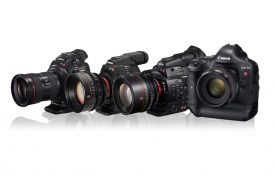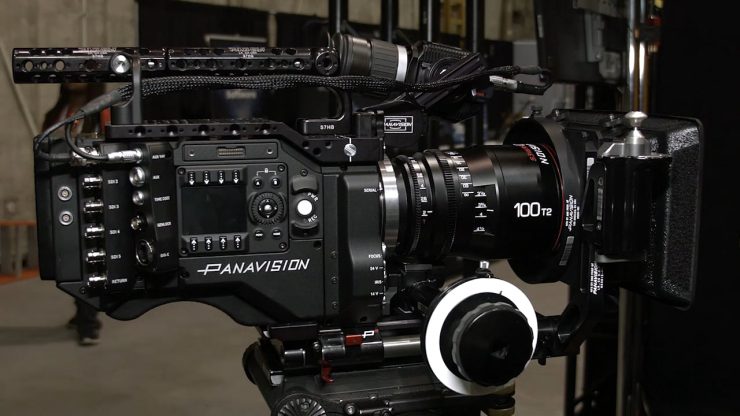
Cameras. We all love them, we all like to obsess over which one is better, and we are all waiting for that one dream camera to arrive. When will enough be enough? Will we ever reach a point where going beyond a certain resolution or dynamic range will no longer matter?
Tipping Point
The modern-day tipping point for camera acceleration came back in 2008, and it came from an unlikely source. When Canon was designing the 5D Mark II I’m pretty sure they had no idea that it would ultimately be responsible for changing the camera landscape forever.
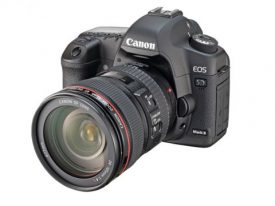
You could very well argue that even if the video functionality hadn’t been put into the 5D Mark II that someone else would have come along and done the same thing, and that’s a fair point. What the 5D Mark II did do is to actively force manufacturers to come up with lower cost alternatives to the much more expensive offerings they had available at the time.
Personally, I have no doubt that even if the 5D Mark II had never existed, that a similar camera or cameras would have still come along… eventually. What Canon ultimately did was accelerate the whole process and create a camera boom.
Since the release of the 5D Mark
Here is a list of digital cinema cameras that have emerged over the last 10 years or so (I’m sure I have probably missed quite a few too):
- (I’m not going to list still cameras with video modes or smaller sensor cameras as there are too many)
- AJA Cion
- Arri Alexa
- Arri Alexa Plus
- Arri Alexa Plus 4:3
- Arri Alexa M
- Arri Alexa Studio
- Arri Alexa XT
- Arri Alexa 65
- Arri Alexa Mini
- Arri Alexa SXT
- Arri Alexa LF
- Arri Alexa Mini LF
- Arri Amira
- Blackmagic Pocket Cinema Camera
- Blackmagic Pocket Cinema Camera 4K
- Blackmagic Production camera
- Blackmagic URSA
- Blackmagic URSA Mini
- Blackmagic URSA Mini 4.6K
- Blackmagic URSA Mini Pro
- Blackmagic URSA Mini Pro G2
- Canon C300
- Canon C300 Mark II
- Canon C100
- Canon C100 Mark II
- Canon C200
- Canon C500
- Canon C700
- Canon C700 GS PL
- Canon C700 FF
- Digital Bolex D16
- Digital Bolex D16 Monochrome
- Ikonoskop A-Cam dII
- Kinefinity KineRaw S35
- Kinefinity KineRaw-Mini
- Kinefinity KineMAX 6K
- Kinefinity TERRA 6K
- Kinefinity TERRA 4K
- Kinefinity MAVO
- Kinefinity MAVO LF
- Panasonic AG-AF100
- Panasonic Varicam 35
- Panasonic Varicam LT
- Panasonic Varicam Pure
- Panasonic EVA1
- Panavision Millennium
DXL - Panavision Millennium
DXL 2 - Phantom 65
- Phantom Flex 4K
- RED ONE M-X 4K
- RED SCARLET M-X 5K
- RED SCARLET DRAGON 6K
- RED EPIC M-X 5K
- RED EPIC M-X 5K MONOCHROME
- RED EPIC DRAGON 6K
- RED EPIC DRAGON 6K MONOCHROME
- RED EPIC DRAGON 6K CF
- RED RAVEN 4.5K
- RED SCARLET-W RED DRAGON 5K
- RED SCARLET-W RED DRAGON 5K MONOCHROME
- RED RED EPIC-W GEMINI 5K S35
- RED EPIC-W HELIUM 8K S35
- RED DSMC2 DRAGON-X 5K S35
- RED DSMC2 GEMINI 5K S35
- RED DSMC2 DRAGON 6K S35 (Mg), formerly WEAPON 6K (MAGNESIUM)
- RED DSMC2 DRAGON 6K S35 (CF), formerly WEAPON 6K (CARBON FIBER)
- RED DSMC2 HELIUM 8K S35, formerly WEAPON 8K S35
- RED DSMC2 HELIUM 8K S35 MONOCHROME, formerly WEAPON 8K S35 MONOCHROME
- RED DSMC2 DRAGON 8K VV, formerly WEAPON RED DRAGON 8K VV
- DSMC2 MONSTRO 8K VV, formerly WEAPON MONSTRO 8K VV
- Sony FS5
- Sony FS100
- Sony FS5 II
- Sony FS7
- Sony FS7 II
- Sony F3
- Sony FS700
- Sony F5
- Sony F55
- Sony F65
- Sony Venice
That is an incredibly long list. 80 cameras, not including all of the stills cameras that are capable of recording video, smaller-sized sensor camcorders, or broadcast 2/3″ cameras. If you combined all of the professional/prosumer cameras that are capable of capturing video that
If this isn’t the result of a tipping point I’m not sure what is. If you were to count how many professional cameras were released in the decade prior that number pales in significance to what we have seen over the last 10 years.
Cameras are more reliant on electronics than ever before
Most of today’s breed of digital cinema cameras are essentially computers coupled to a sensor. Ok, maybe that is a broad generalization, but for the most part that is what they are.
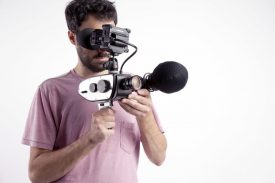
(photo courtesy of ShareGrid, who still have them available for hire surprisingly!)
Hardware is the easy part, but the software is what is really driving these cameras. Modern day cameras, unlike their film counterparts, rely on electronics. Just how good those electronics are, how good the processing power is, how they process the information from the sensor, all help determine just how good a particular camera is.
This is partly the reason why it is very hard for a new company to build a camera from scratch. Building the hardware for the camera is the easy part, getting all the software to work reliably and effectively is a whole other story.
Unlike film cameras, digital cinema cameras are very much linked to computer technology. Computer technology determines what processing, resolution and frame rates can be recorded, what media can be used, what codecs can be used, and how you edit and deal with the footage.
Computer technology and cameras go hand in hand. Digital cinema cameras can only do as much as the computer technology allows.
Is the camera boom over?
Over the last couple of years, we have seen a slight decrease in the number of cameras being announced and released. The reasons behind this could come down to multiple factors. I have listed some of them below. Now, I’m no business expert, so these are just some of my own personal thoughts.
Over saturation of the market- R&D can’t keep up with the pace
- Incremental improvements in camera technology
- Holding back of technology
- Not wanting to alienate the customer
- Lens design
Over saturation of the market
With so many cameras on the market, manufacturers need to be very careful just how many models they release. If you are a company such as Sony or Canon where do you slot a new camera in? It doesn’t make any business sense to offer a camera for $5000 that has the same features and abilities as a camera you already sell for $15,000.
Once you have a certain number of camera models that cover a broad spectrum in regards to price, you need to protect your line up. In saying that, both Canon and Sony have blurred the lines when it comes to cameras that offer very similar functionality at different price points.
If your camera is still selling well even a few years after it was originally announced it also makes zero financial sense to roll out a new replacement camera. You wait until the sales numbers start declining to a point where a new model is needed.
A prime example of not replacing a camera because it is still selling well is the Sony FS7. The FS7 is Sony’s most successful and highest selling S35 camera of all time, by a mile. Sure they brought out an FS7 II, but it was more of a mild upgrade to an existing camera than anything else.
R&D can’t keep up with the pace
It’s not easy to make a camera. It requires an awful lot of R&D and a ton of money. This is why we see a lot of cases where the camera body remains the same and only the internals are changed. The same sensors are also often used across various models to keep costs down.

If you are a company that constantly wants to develop and make new products from the ground up, you are putting an awful lot of strain on your R&D departments. This is especially true of cameras. Not only do you have to blend together hardware and software, but it all has to be packaged together into one cohesive unit that can be sold at a price that makes the company money.
If your company is trying to develop multiple cameras and multiple models of that camera your resources get stretched even thinner. You would be surprised just how many cameras are still frantically getting worked on right up to their shipping date.
Incremental improvements in camera technology
Every product reaches a point where to make it a lot better you need to go back to the drawing board and start from scratch. There is only so much improvement you can do with an existing product or design.
Going back to the drawing board and starting from scratch has to be looked at as a long term project. Sometimes it takes four to five years, or even longer to develop a product from scratch. Camera companies don’t just suddenly decide to build a new camera with its concept to completion date set at six months.
Holding back of technology
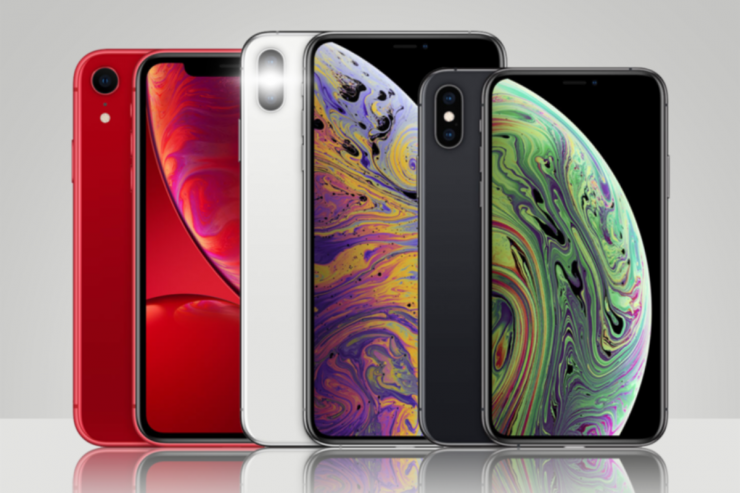
The holding back of technology is a common thread across a lot of industries. From a (traditional) business perspective you don’t want to spend years developing various technology only to skip straight ahead to giving the consumer the latest and greatest available.
As a company, you want to slowly roll out products you have developed over a prescribed period of time so you can recoup all of your R&D costs and maximise profits.
If you have developed an 8K and a 6K sensor, for example, you don’t want to rush the 8K out the door if people will be willing to buy the 6K. You wait until the number of sales starts to dry up and then you release the next model.
Not wanting to alienate the customer
A company only exists as long as it has customers who are willing to buy its products. If you alienate or upset enough customers you risk financial decline.
By releasing too many camera models or bringing out a replacement version of the camera you just launched six months prior, a manufacturer risks alienating that customer.
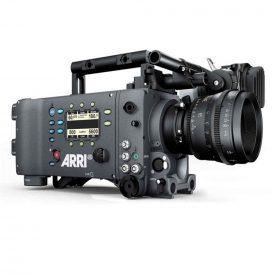
It’s very interesting to see the strategies of various camera companies and what they do (or don’t do) to avoid alienating customers.
With mid to higher-end cameras, you can’t bring out a replacement model every one or two years. If you do, the customer who just spent $30,000 is not going to be very happy. Customers who are willing to pay this much money want to recoup their investment and see it at least hold some value over the expected period of ownership. They want their purchase to give them a reasonable period of use before they need to replace it.
This has very much been the strategy from companies such as ARRI, and Sony with the F5 and F55.
If you look at the lower end of the camera market, consumers are not so fussy. They want the latest and greatest and are happy to see a new model pop up every year so they can upgrade.
Mid-level cameras ($5-10K) are always the ones caught in the middle and the hardest for companies to strategize with. Often there is a fine line between their specifications and manufacturers may have two, three or even four cameras all within a few thousand dollars of each other.
It’s in this price range where the cameras are often updated every two to four years. Often this doesn’t revolve around a totally new product, but more of an incremental upgrade of a camera that the company already sells.
Once you have a certain number of cameras in the market, it becomes more and more difficult to differentiate between them in relation to price and performance. This is especially true in this mid-range segment of the market. If you bought a C300 Mark II, for example, you may have been annoyed when Canon brought out the C200. If you bought a URSA Mini Pro you may well have had that same feeling when the 4.6K was announced.
Companies need to very careful how they market their cameras if they have several models in this mid-range space.
Lens design
Optics are optics and therefore the limitations of lens design conversely affect camera development.
It’s all good and well coming up with a 20K camera but you still need to put a lens on that camera to obtain an image. Higher resolutions and larger sensors push optical design to its limits.
Eventually, we may find camera development haltered in its tracks due to the physical limitations of optics. Ironically, the very item that is required to produce an image is the same one that will
Are we approaching a camera slowdown?
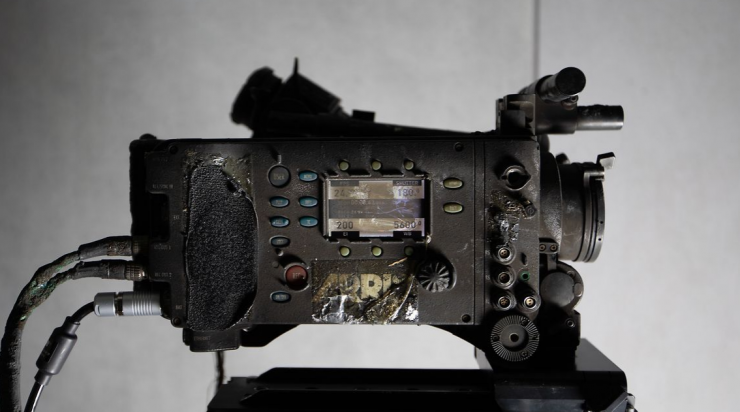
Yes and no. As long as there are consumers willing to buy new cameras there will always be manufacturers who will make new cameras. Whether we have reached a point in time where the improvements are starting to get smaller and smaller is another story altogether.
After the release of the 5D Mark
What we have seen is that dynamic range in most cameras has reached a point where it has plateaued out. Almost all cameras now offer between around 11-14 stops of dynamic range.
The ARRI Alexa sensor is still thought to be the industry benchmark and that was introduced nine years ago! ARRI still use a variant of that same sensor in the ALEXA LF, Alexa Mini LF, and The ARRI ALEXA 65. If ARRI hasn’t been able to improve on that sensor in nine years it certainly seems to suggest that maybe we have reached a bit of a plateau.
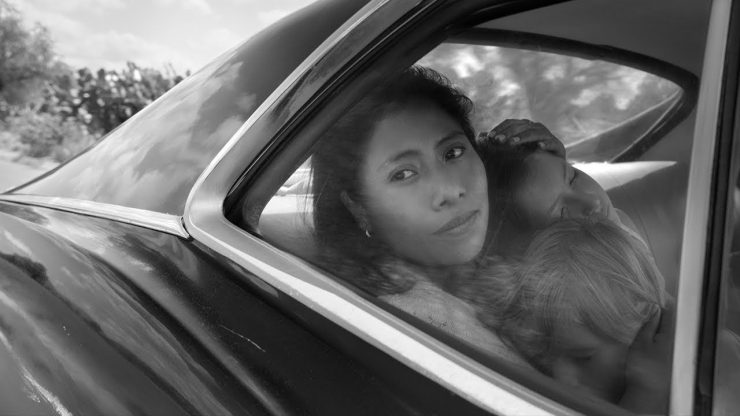
(shot on ARRI Alexa 65)
Full frame sensors and high resolution seem to be all the rage at the moment, but how long before that changes?
Sure, the resolution has increased, codecs have gotten better, and there are more features than ever in cameras, but at the end of the day has real-world shooting significantly improved over the last few years because of camera technology?
Again this is something you could argue about. I personally think it has improved the real world shooting experience but has it resulted in me being able to obtain vastly better material than I was shooting 5-6 years ago? No.
If you take a look at all of the 2019 Oscar-nominated pictures for Best Movie, they were all shot on cameras that have been available for many years. The newest camera used on any of these movies was the ARRI ALEXA SXT that was announced back in 2015. Let that sink in, the newest camera used was manufactured four years ago!
In fact some of the movies were shot on film cameras. This tells you all you need to know. If major productions are choosing to use older cameras that have been available for years, even though much newer cameras are available, they must be more than happy with the results they produce.
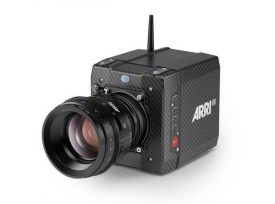
It’s not like they were forced into using a particular camera because of budget constraints. A Star is Born and Green Book were both shot on the ARRI Alexa Mini, a four-year-old camera that can’t even natively shoot proper 4K images.
Even the 2019 Oscar-nominated Best Documentary films were all shot on either the Canon C300, Canon C300 Mark II, or a Canon 5D Mark II, Canon 5D Mark III, or a Canon 1DX Mark II.
The newest camera in that bunch is the C300 Mark II, which was announced in 2015. Are you starting to see a trend here?
If a lot of people are still very happy to use older technology what does that say about current camera
For me personally, I’m waiting for improved dynamic range and in-built camera stabilization in digital cinema cameras. I’m not overly fussed about increased resolution and I think most cameras have reached a point where they perform well when it comes to low light performance and resolution.
Don’t get overwhelmed by the resolution hype
I think there is a certain level of subconscious expectation that clouds peoples minds when it comes to resolution. Some people tend to think that higher resolution somehow magically provides better images.
Just because a camera can shoot in 6K or 8K doesn’t mean it is necessarily better than a camera that can only shoot in 2.8K or 4K. Marketing BS leads consumers to believe that resolution is the be all and end all of quality. When in fact, there is much more to image quality than just resolution.
I’m not for one second trying to diminish the argument that resolution doesn’t matter, because for certain applications it does.
The top cinematographers in our industry often end up shooting large productions on older cameras that don’t offer the highest resolution. Now, why is this? I’m not going to enter into a debate about why, but I’ll let you fight it out in the comments section.
When will enough be enough?
Camera Technology is bound to reach a point where any perceived increase in quality isn’t going to recognizable by the human eye.
Once resolution reaches a certain level and dynamic range is equal to or exceeds what the human eye can perceive what comes next?
One thing is for sure, there is always going to be new cameras being released regardless of whether they offer any real-world benefits or not.
I think as far as camera technology is concerned we have reached a point where everyone is waiting to see what the next big thing will be.
What are your thoughts on camera development and where it is heading? What do you want to see introduced and why? Let us know in the comments section below.

